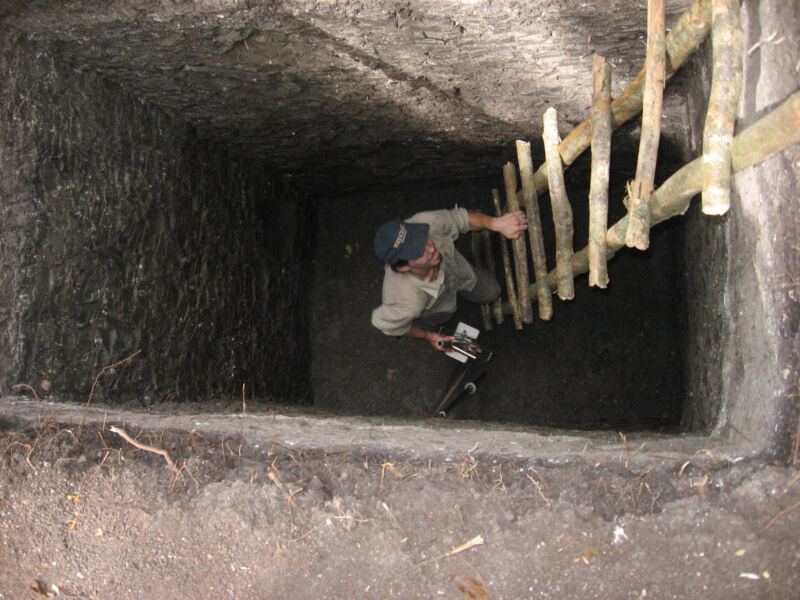Mercury and algal blooms poisoned Maya reservoirs at Tikal

Enlarge / UC graduate student Brian Lane climbs out of the Perdido Reservoir. (credit: Photo/Nicholas Dunning)
For centuries, Tikal was a bustling Maya city in what is now northern Guatemala. But by the late 800s CE, its plazas and temples stood silent, surrounded by mostly abandoned farms. A recent study suggests a possible explanation for its decline: mercury and toxic algal blooms poisoned the water sources that should have carried the city through dry seasons.
Tikal's Maya rulers built the city's reservoirs to store water from rain and runoff during the winter months. The pavement of the large plazas in the heart of the city tilted slightly, helping funnel rainwater into the reservoirs. Over the centuries, dust and litter settled into the bottom of the reservoirs, too, providing a record of what the environment around Tikal was like-and what was washing into the city's water supply. University of Cincinnati biologist David Lentz and his colleagues sampled layers of sediment dating back to the mid-800s, and they found that two of Tikal's central reservoirs would have been too polluted to drink from.
An X-ray fluorescence spectrometer (which identifies the chemicals in a sample based on how they react to being zapped with an X-ray light) revealed that the sediment on the bottom of the reservoirs was laced with dangerous amounts of mercury. Lentz and his colleagues also found ancient DNA from blue-green algae, or cyanobacteria, which can produce deadly toxins.
Read 21 remaining paragraphs | Comments